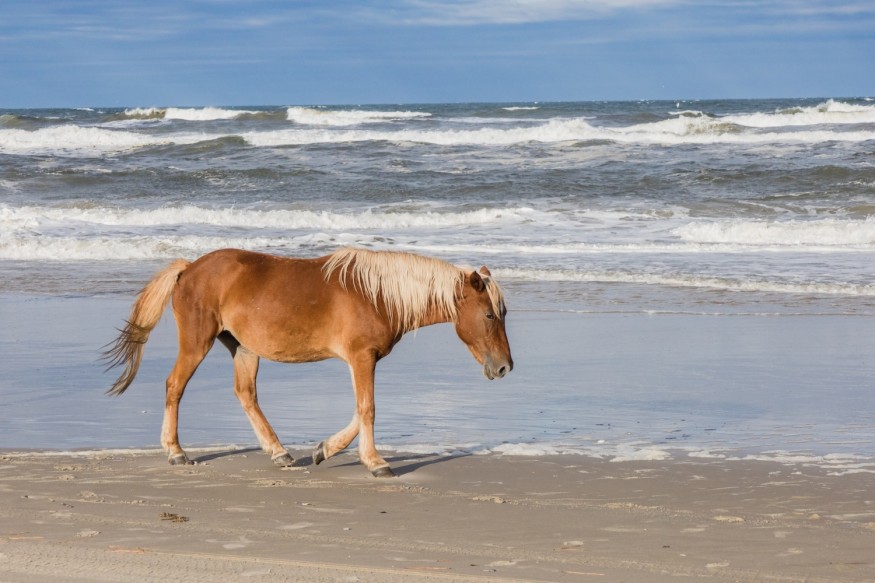
An organization learned that Caroline, a wild horse wandering along the beach in North Carolina, died from a neck injury when an aggressive stallion attempted to mate with her.
Caroline, the North Carolina Beach Wild Horse
Caroline, a 12-year-old wild mare, passed away on Thursday, according to the Corolla Wild Horse Fund.
According to the organization, witnesses reported a stallion following her and attempting to mate her aggressively at about 5 PM local time. Caroline died at that point after collapsing to the ground.
The wild horse's neck had been broken, according to a necropsy. Internally, no further harm or anomalies were discovered.
While Caroline's demise is heartbreaking, the Corolla Wild Horse Fund stated in a social media post that Caroline's injuries were consistent with the behavior documented and were the consequence of normal wild horse behavior.
The nonprofit's website also noted that Caroline's passing ought to serve as yet another reminder of how really wild and perilous these horses are, particularly when hormones are involved, FOX9 reports.
Corolla Wild Horse Fund
Concerned individuals saw the need for increased awareness of wild horses ranging from the Duck to the Virginia border, and the Fund was established in 1989 as a result. Between 1985 and 1989, 11 horses were hit by automobiles on Highway 12 and died as a result when the roads were paved. In the ten years that followed the paving of the road, 20 horses were also hit by vehicles and died as a result.
Many of the tourists who visit the Outer Banks today are unaware that the 17-mile section of road between Duck and Corolla was unpaved and rarely trafficked until 1985. When the route was paved, it unleashed a wave of growth, tourism, and increased interaction between humans and wild horses, as well as their automobiles, according to Corolla Wild Horse Fund.
Wild Horses of North Carolina
The wild Colonial Spanish Mustangs, the longest-lasting inhabitants of the Outer Banks, have made this strip of land between sound and sea their home for more than 500 years.
They are considered the state horse of North Carolina. Some of the horses are supposed to have survived shipwrecks, while others are said to have been abandoned settlers who have flourished on these uninhabited barrier islands for several centuries years.
The greatest herds of wild horses may currently be observed here in the furthest points of the Outer Banks. About 100 stallions, mares, and foals live in herds on the beaches and sand dunes of Corolla, the north, and to the Shackleford Banks, which is the southernmost barrier island. On Ocracoke Island, a smaller, more tamed herd of wild horses is found.
Those who are feeling brave can join one of the many guided excursions that are available at both Corolla and Shackleford Banks to get a close-up look at the horses. The foundation cautions observers to keep a safe distance of 50 feet from the horses since they are wild animals. Additionally, while it is recommended to take photographs of the horses, feeding the wild horses is not, says Visit North Carolina.
© 2025 NatureWorldNews.com All rights reserved. Do not reproduce without permission.





